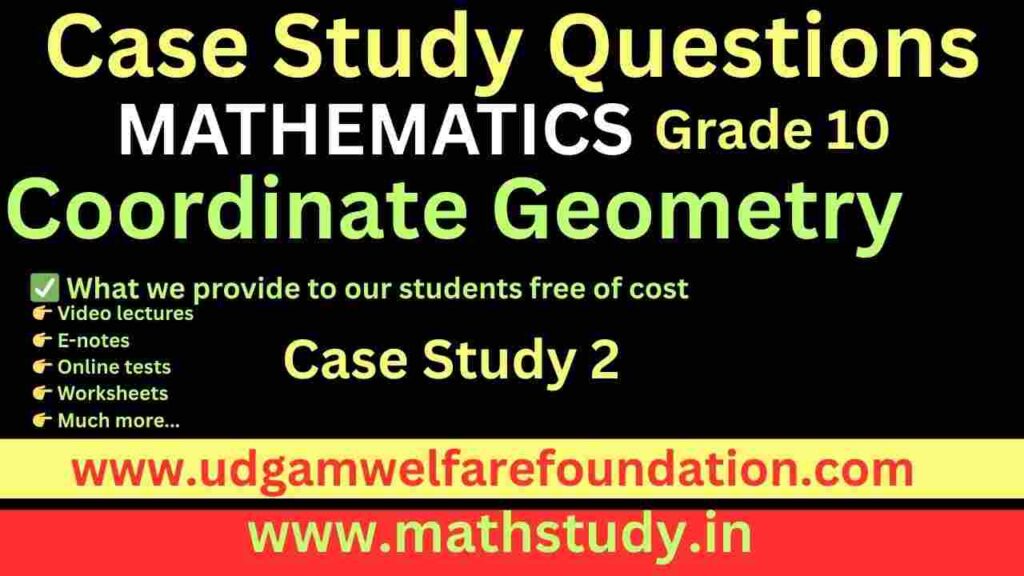Case Study Questions Coordinate Geometry Class 10
Understanding Coordinate Geometry Case Study Questions Class 10 is essential for students preparing for board exams. These Case Study Questions Class 10 allow learners to apply the concepts of distance formula, section formula, and area of triangles in real-life contexts. Since Class 10 is a milestone year, solving Math Case Study Class 10 helps students strengthen concepts and build exam confidence.
Importance of Case Study Questions Coordinate Geometry Class 10
Practicing Case Study Class 10 enhances logical thinking and analytical skills. Students learn to connect geometry formulas with real-world problems like navigation, architecture, and city planning. Teachers recommend Case Study Questions Class 10 for thorough revision as they highlight both strengths and weak areas. By solving such case studies, learners develop deeper understanding and problem-solving ability.
Preparation with Online Tests
Our free online practice tests on Case Study Questions Class 10 include step-by-step solutions and explanations. These Math Case Study Questions Class 10 cover a wide variety of problem situations to ensure effective learning. Regular practice with Case Study Class 10 questions boosts accuracy, confidence, and performance in CBSE exams.
Case Study 2
Ravi, a civil engineer, is planning the layout for a new residential colony. He has identified three key locations for a community center, a park, and a library, which he represents as points on a coordinate plane. The community center is at $A(1, 5)$, the park is at $B(7, 3)$, and the library is at $C(3, -1)$. The local governing body has several questions about the layout and distances between these key locations. They want to ensure that the main walking paths connecting these points are of reasonable length and that the proposed layout covers a significant area. A water supply line needs to be laid from the community center to a point on the path between the park and the library, dividing it in the ratio $3:2$. Ravi needs to calculate the precise coordinates of this junction point. Additionally, he must determine the area of the triangular plot formed by these three locations to estimate the cost of the landscaping and development. The project manager also asks him to find if the points are collinear, as this would change the entire layout plan.
Your Results:
Correct Answers: 0
Incorrect Answers: 0
Percentage Score: 0%

